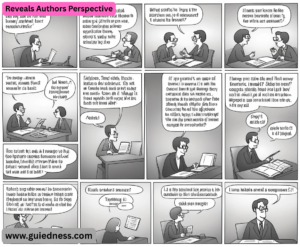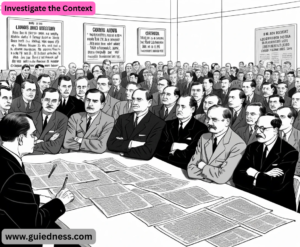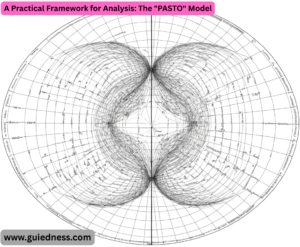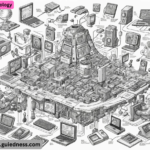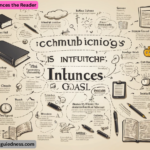Reveals Authors Perspective Of course. “Reveals the author’s perspective” is a key skill in critical reading and analysis. It means looking beyond what the author says to uncover why they are saying it and how their personal lens shapes the text. Here’s a breakdown of what this means, how to identify it, and why it’s important.
What is the Author’s Perspective?
The author’s perspective is the combination of their:
- Viewpoint: Their specific opinion or stance on the topic.
- Bias: Their inherent prejudices or inclinations (which all authors have to some degree).
- Purpose: Their reason for writing (to persuade, inform, entertain, explain).
- Tone: Their attitude toward the subject and the audience (e.g., sarcastic, respectful, outraged, objective).
- Background: The influences of their culture, historical context, personal experiences, education, and beliefs.
- Essentially, it’s the lens through which the author sees the world and, consequently, the topic they are writing about.
How to Identify and Reveal the Author’s Perspective
You reveal the perspective by being a detective, looking for clues in the text and context.
Analyze Word Choice (Diction)
The words an author chooses are never neutral.
- Connotations: Does the author describe a group as “freedom fighters” or “terrorists”? As “frugal” or “stingy”? The emotional charge of the word reveals their attitude.
- Loaded Language: Words deliberately designed to provoke an emotional response (e.g., “heartless bureaucracy,” “radical agenda,” “common-sense solution”).
Examine the Evidence and Examples
- What is Included? What facts, statistics, or stories does the author highlight? Why did they choose these specific examples?
- What is Omitted? What counterarguments or inconvenient facts are left out? This is often the clearest sign of bias.
- How is it Framed? Is the evidence presented as objective fact, or is it woven into a specific narrative?
Identify the Tone
- The tone is a direct window into the author’s feelings.
- Is the tone sarcastic, humorous, solemn, passionate, detached, admiring, or contemptuous?
- Example: An author writing about a political figure with a tone of reverence has a very different perspective than one writing with a tone of skepticism.
Consider the Purpose
- Ask yourself: What does the author want me to do, think, or feel after reading this?
- To Persuade: The perspective will be strong, clear, and likely one-sided. (e.g., an op-ed, a speech).
- To Inform: The perspective might aim for objectivity, but choices about what to include and emphasize still reveal a point of view. (e.g., a textbook, a news article—though bias still exists).
- To Entertain: The perspective might be whimsical, dark, or satirical, reflecting the author’s view of human nature or society.
Investigate the Context
- Historical/Cultural Context: When and where was this written? An author writing about communism in 1950s America will have a vastly different perspective than one writing in 1970s Vietnam.
- Author’s Background: What is known about the author’s life, profession, political affiliation, or other works? A CEO writing about unions will have a different perspective than a labor organizer.
Examples in Action
Text A (From a corporate press release):
- “Our strategic restructuring will streamline operations and enhance shareholder value, positioning the company for future growth. We are committed to supporting our transitioning employees with severance packages and career counseling.”
- Perspective Revealed: The author (the corporation) has a business-centric, financial perspective. The tone is positive and formal (“streamline,” “enhance value”). It uses euphemisms (“transitioning employees” instead of “laid-off workers”) to soften the negative impact and frame the decision as necessary and even beneficial for all.
Text B (From a labor union newsletter):
- “The company’s ruthless downsizing plan sacrifices hundreds of hard-working families at the altar of corporate greed. Management has chosen profits over people, betraying the very employees who built this company.”
- Perspective Revealed: The author (the union) has a worker-centric, social justice perspective. The tone is angry and moralistic (“ruthless,” “greed,” “betraying”). It uses loaded language (“altar of corporate greed”) to create a villain and frame the decision as a moral failure.
- Both texts are about the same event (layoffs), but they reveal completely opposite author perspectives.
Why is Revealing the Author’s Perspective Important?
- Critical Thinking: It moves you from being a passive receiver of information to an active, critical consumer. You stop asking “Is this true?” and start asking “Why is the author telling me this?”
- Uncovering Bias: It helps you identify the inherent bias in every piece of writing, allowing you to evaluate its reliability and credibility.
- Deeper Understanding: It enriches your reading by allowing you to see the human intent behind the words. You understand the text not just as a collection of facts, but as a constructed argument or narrative.
- Forming Your Own Opinion: By understanding the author’s perspective, you can better decide where you agree, disagree, or need to seek more information to form your own, independent view.
Advanced Lenses for Revealing Perspective
- Beyond word choice and tone, you can analyze a text through these more formal frameworks:
The Lens of Omission and Silencing
This is one of the most powerful critical tools. Ask not just what is there, but who or what is missing?
- Whose voice is not heard? In a historical text about an empire, the author might share the perspective of the conquerors. The perspective of the conquered, the enslaved, the everyday people, is often silenced. Recognizing this silence is a direct insight into the author’s limitations or biases.
- What counter-argument is ignored? A persuasive piece that presents only one side of an argument reveals an authorial perspective that is not interested in a balanced debate but in winning you over.
The Lens of Framing and Metaphor
How does the author set up the problem? The “frame” determines what we see as the cause and the solution.
- Metaphors: An author who frames a nation’s economy as a “leaky boat that needs patching” has a different perspective from one who frames it as a “garden that needs nurturing.” The first implies a problem of loss and damage; the second implies a problem of growth and care.
- Problem Definition: An author who frames poverty as a result of “individual life choices” has a conservative, individualist perspective. An author who frames it as a result of “systemic inequality” has a progressive, structural perspective. The frame reveals everything.
The Lens of Assumption
- What does the author take for granted that I might question? These are the unstated beliefs that form the foundation of their argument.
- Example: An author arguing for space exploration might assume that “humanity’s destiny is to explore the stars.” This is not a fact; it’s a belief. Revealing this assumption shows you that the author’s perspective is fundamentally optimistic, forward-looking, and perhaps even quasi-spiritual about human purpose.
- Example: A fashion article that assumes “everyone wants to look youthful” reveals a perspective deeply embedded in a culture that fears aging.
A Practical Framework for Analysis: The “PASTO” Model
- Use this acronym as a step-by-step guide to reveal perspective in any text.
- P – Purpose: What is the author’s primary goal? (To Persuade, Argue, Sell, Teach, Obscure?)
- A – Audience: Who is the author speaking to? (The general public? Experts? Supporters? Detractors?) The choice of audience shapes the perspective. You speak differently to a friend than to a judge.
- S – Subject: What is the main topic? How is the subject defined and limited by the author? (e.g., Is “success” defined as wealth, happiness, or fame?)
- T – Tone: What is the author’s attitude? (Is it Ironic? Sincere? Cynical? Urgent? Academic?)
- O – Omission: What is strategically left out? What questions are not being answered?
Applying PASTO to a Social Media Post:
“Just saw another person blindly following the latest health fad without doing any real research. The lack of critical thinking in this country is truly alarming. #DoYourOwnResearch”
- Purpose: To persuade others that the health fad is foolish and to champion independent research.
- Audience: The author’s followers; people likely already skeptical of trends.
- Subject: Health fads, but narrowly framed as a problem of public stupidity, not of marketing or scientific communication.
- Tone: Dismissive, superior, and alarmed.
- Omission: What “real research” entails. Any recognition of why people might trust these fads (e.g., desperation, lack of access to good information). Any concrete advice on how to research.
- Revealed Perspective: The author sees themselves as an enlightened critical thinker in a sea of gullible people. Their perspective is individualistic (blaming individuals rather than systems) and intellectually elitist.
The Difference Between Perspective, Bias, and Tone
It’s helpful to distinguish these closely related terms:
- Perspective: The overarching lens. It’s the why behind the writing. (e.g., a Feminist perspective, a Neoliberal economic perspective).
- Bias: The inherent prejudice within that perspective that leads the author to favor one interpretation over others. It’s the slant. (e.g., A bias towards individual responsibility over government intervention).
- Tone: The emotional flavor of the writing, which is a symptom of the perspective and bias. (e.g., A skeptical tone, an outraged tone).
The Ultimate Goal: Achieving Critical Distance
- The final and most important reason for revealing the author’s perspective is to create critical distance between you and the text. You are no longer absorbing the message at face value. Instead, you are:
- Holding the text at arm’s length and examining it as a constructed object.
- Understanding that this is one version of reality, shaped by a specific human being with a specific agenda and background.
- Empowering yourself to decide how much of that author’s perspective you wish to adopt as your own.


